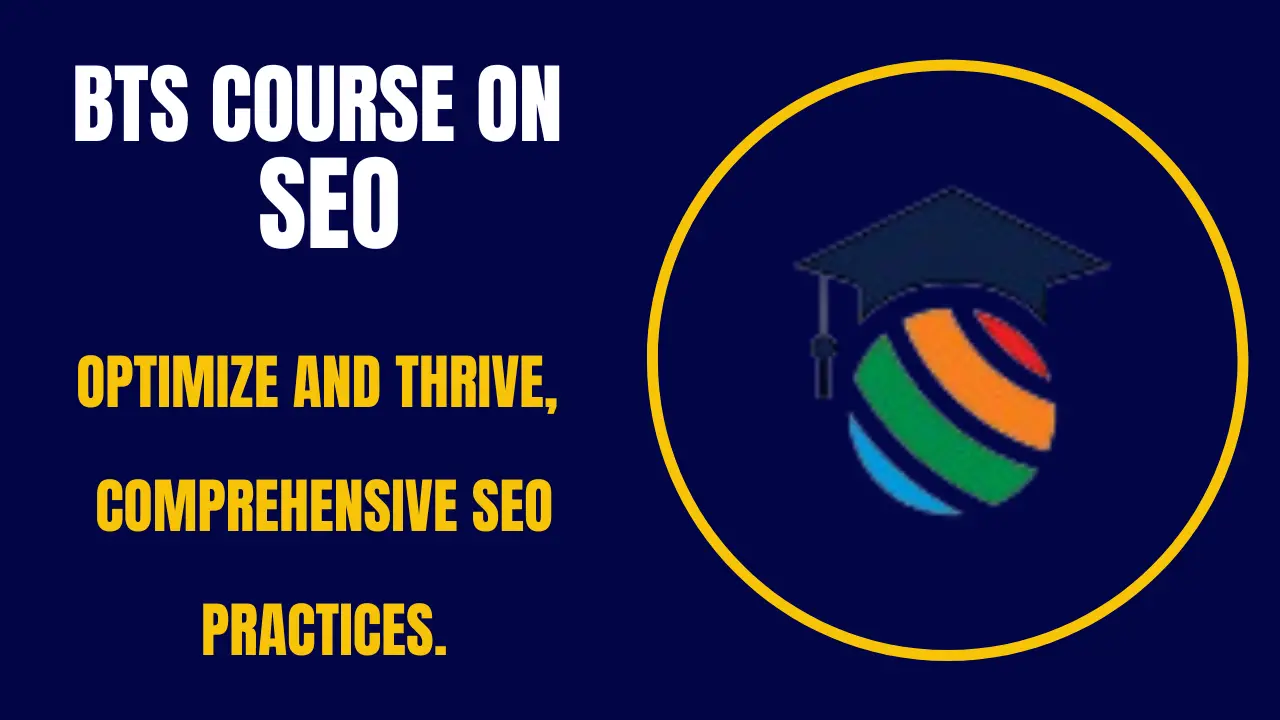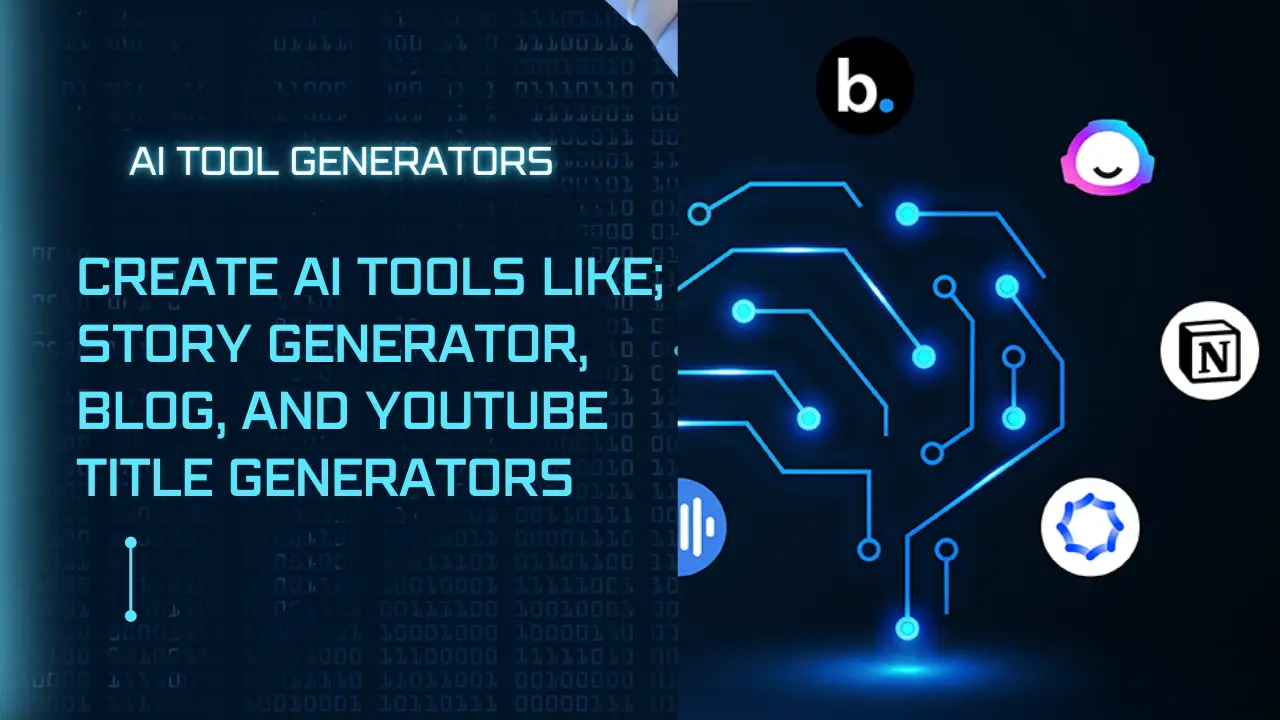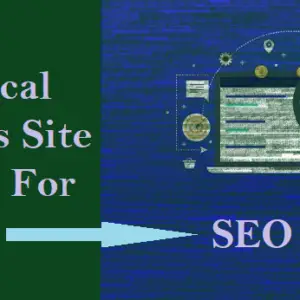a). HOW DOES SEARCH ENGINE WORK? (Search Engines)
No doubt about it most of us know how to search things on search engines like Google, Bing, and Amazon, but have you ever thought about how it works and the signs behind it?
So understanding how the backend of search engines works will give you a good purpose for practicing SEO. Then let us go with this simple analogy, imagine you are starting a pharmacy, there will be medicines and vaccines all pilled up in your inventory, and someone would come up to you and ask; can you prescribe me something for my swollen hands?
Then what would you do? I know you would open up the— cartons and search for labels to get the exact results. The same process is what the search engines do using what is called “Crawling” to visit, scan, and scrape a web page, they will visit pages that are linked to that page, and they will do the same thing over and over again.
This they will do by crawling as deep as possible on a specific website. The most amazing thing is that they don’t do it on just one site or one page, they do it on millions of sites and pages every single day.
Once the crawling is done, all the information is brought back to the search engine’s (for example: Google) database for processing. Image analogy below:
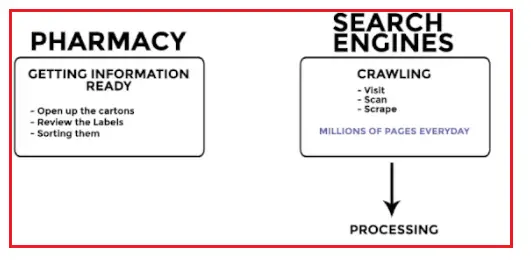
So this is how Google explains its indexing process. We’ve talked about the crawling, image description below:
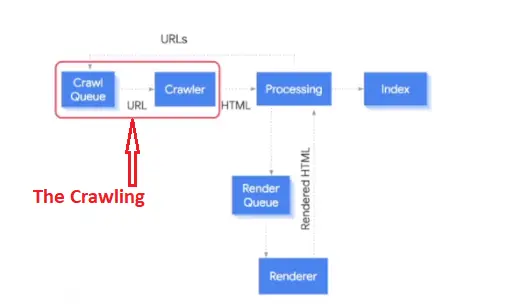
but what about the processing? Image description below:
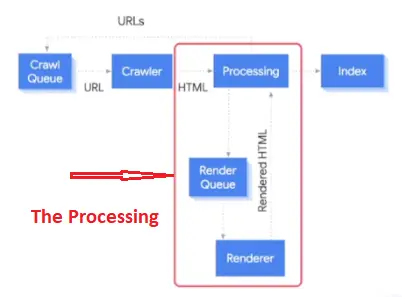
Using the context of the pharmacy as we’ve talked about above, you are putting information or scanning barcodes in your database so that they can be sorted and searched for later on.
But along the way you may find some linkage or wrong orders or whatever that might have gone against the arrangement, and these will not likely go into your database.
This is what also happens in the processing phase of the search engines.
The search engines are processing whether your pages are duplicates, have technical errors, and every possible error before they get indexed into their database for viewing. Image analogy below:
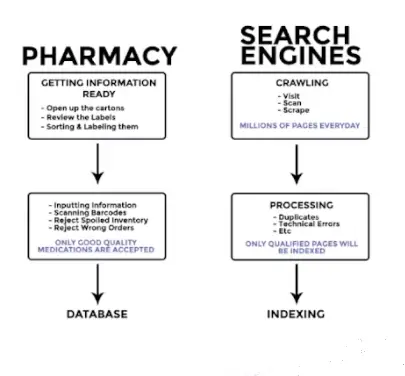
I hope this analogy is simple enough for you to understand the indexing process of search engines but know that INDEXING and RANKING are two different things.
Let’s get to explain them one after the other for vivid understanding.
INDEXING:->
Indexing means the information on a web page is stored and sorted in a search engine database.
RANKING:->
The search engine will run through their large database of information, through an algorithm and pick out the pages that are most helpful and contain the most relevant information for a particular search term. Image analogy below:
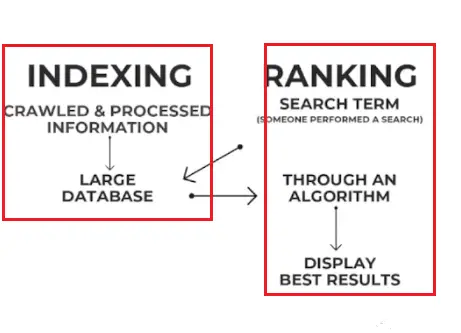
Then in the context of the pharmacy analogy used above, A SEARCH TERM is when a patient approaches you and asks a question, and in terms of RANKING, you are the person who will determine which medication is best suited for the patient based on what you’ve accessed, the knowledge you’ve learned and then you decide on the recommendation.
Image analogy below:
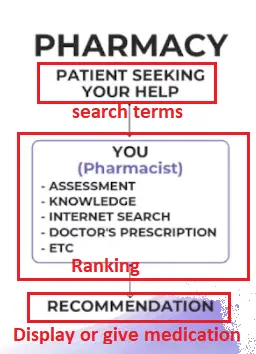
In the case of search engines like Google, they run their large database through hundreds of search ranking factors to decide on which pages to display. Image description below:
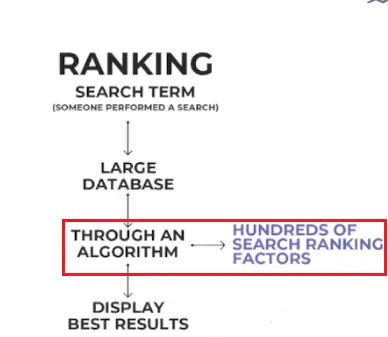
First, technically when you are searching for something on a search engine such as Google, THE SEARCH RESULTS ARE NOT PROVIDED LIVE. Take note of that.
Google is crawling and searching for something seconds after you type in the search terms. What you are doing is technically searching their big database of information that they have been crawling and indexing daily, and you are served with the best result based on their algorithm.
Going back to our analogy image below:

I hope that this analogy makes it very easy for you to understand how search engines work.
And in the next lesson, we will be talking about what SEO means, and the reasons why you should care about it as a business owner or a blogger.
b). WHAT IS SEO? (Do You Have Any Knowledge About Search Engine Optimization?)
At this point, you should probably be able to talk about SEO if you are asked, so it needs no introduction.
But I will go ahead to further give you an overview of what SEO is all about.
SEO is more than just optimizing your site for search engines to find it, it plays a huge role in the overall success of your brand and business.
Let’s go with this kind of analogy, assuming that you run a yoga service and the only way to get new customers is through your existing customers from referrals and foot traffic.
This method is if your business does not have a website or any online presence. Image description below:

Then you decided to go online since it is what everyone is doing. You created a website or a blog and started posting content about how awesome your yoga classes are to individuals.
You started to have online traffic but after a while, you still seem not to see enough concerning new customer acquisition. Then why? This might be the question boggling your mind.
That’s because when someone searches for:
— Best Yoga courses.
— Best Yoga classes in town or,
— Yoga classes for beginners
Still, your business is nowhere to be found.
Now Google and Bing are two of the most well-known search engines.
Using Google as a case study, when someone searches and finds your online business at the top of the search results, it means you have high-quality traffic from the search engine.
And the chances of your business acquiring more customers are high. So to get to the top of the search engines, that is where SEO comes into play.
TWO PARTS OF SEO MAKE EVERYTHING WORK:
1) On-Page SEO:– This is the part that you can control.
2) Off-Page SEO:– Where you have limited control.
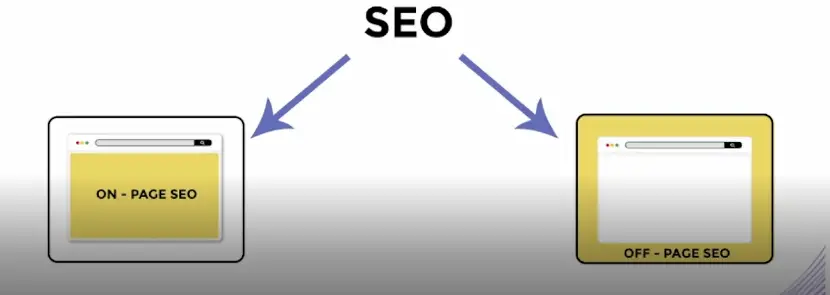
Then let’s talk about the two one after the other.
ON-PAGE SEO:-
— On the On-page SEO you will start researching on the Keyword you want your business to rank for.
— You will start creating content around those keywords to satisfy the search intents.
So those keywords that make your business be seen on the search engine results are usually more competitive. As a company that is starting to grow its audience online, you need to work on other related keywords that are not so competitive.
Then there is the need to build internal links to those pages that are related to each other and it helps to build relevance to be seen as an authority in your area of specialization.
That is what is known as site structure or architecture which is an entire module on its own we will be treating as well.
Then there will be some technical SEO such as;
— Alt-text on images.
— Meta titles and descriptions.
— Page speed.
— ETC anything you can do on your site to have the best result of On-Page SEO.
THE ELABORATE STRUCTURE OF WHAT IS EXPLAINED ABOVE LOOKS LIKE THIS:
On-Page SEO:-
a). Keyword Research.
— Competitive keywords (keywords that make the most money)
— Less competitive keywords
b). Content Creation.
c). Site Structure.
— Internal Link
d). Technical SEO.
— Alt text on images
— meta titles & descriptions
— Page Speed
— ETC ( anything you can do on your site to have the best result of On-Page SEO. )
Below is the image description of the structure.
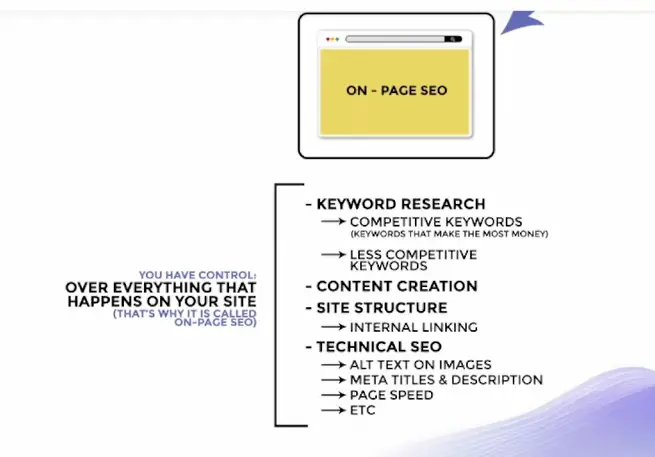
Then the SEO works with your entire digital marketing strategy and that is where OFF-PAGE SEO comes into play.
Off-Page SEO:
This is to help your business, brand, or website create and build trust, authority, or street credibility.
This will help build fast topical authority in a niche. This is because you can’t only rely on publishing content on your site, you need to appear everywhere.
For example, you need to be creating content on YouTube, Facebook, Instagram, X(formerly Twitter), LinkedIn, and even having content published on blogging forums like Quora, (BTS)Blogtostay, ETC.
While doing your street credibility on those platforms, there should be people who will be comfortable linking to your website at last. That is where your back-link opportunity starts from.
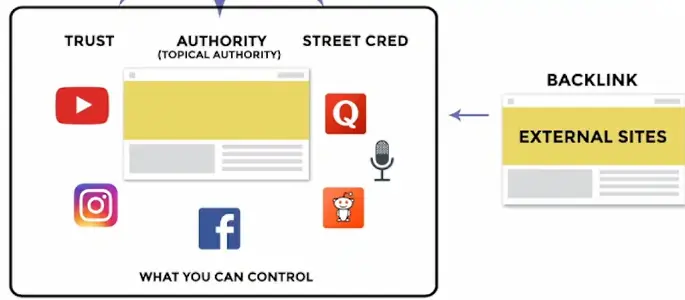
Alternatively, you can reach out to other website owners in their direct or indirect niches and ask them to link back to your site or write a guest post to them because the more backlinks, the more authority your site commands and the more Google and other search engines regard your content as trustworthy.
NOTE: The chances of other sites linking back to you are much slower than if you focus on building off-page SEO naturally with those social websites and forums.
There is a way to get by building Off-Page SEO, you can pay influencers to talk about your brands and set up an affiliate program to reward your customers for recommending your products.

So to be successful with the overall SEO and gain brand recognition and trust from your customers, you need to focus on both On-Page and Off-Page SEO.
Assuming you want to push further ahead of On-Page and Off-Page SEO, you could pay for ad placement like Google ads, Facebook ads, YouTube ads, ETC.
Remember that SEO is a part of your entire marketing strategy and if you are missing out on the SEO part, technically you are putting money on the table. Let’s examine the entire SEO process with the graphic below:
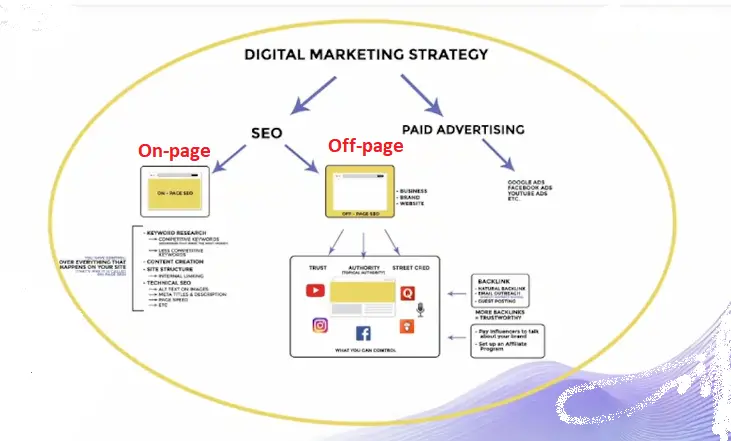
Yes, in this lesson we have learned an overview of what SEO is all about, and how you can apply it to your businesses.
In the next module, we will understand more about the elements of the search engine results page SERPs.
Let’s go there…….
ATTENTION PLEASE!
1). What is the problem you want me to write an article about? Drop it in the comment section.
2). Do you need any of my services? Check out my service page here. HIRE ME
3). Do not forget to subscribe below and get my e-book offer: “HOW TO START AND STAY BLOGGING AND NEVER LEAVE IN THE 2020s” as well as my weekly newsletter.
4). Equally drop your comments, and share this content if you like what I do.

